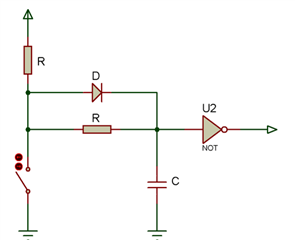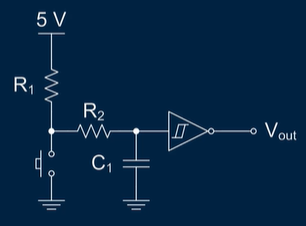I want to design a hardware debounce circuit and I need help with some calculations.
1: How I can figure out the bounce time required for a switch prior to physical testing?
2: I noticed that some circuits use R2. Is there any thumb rule to select that value?
3: I have to connect three switches so can you help me to choose a Schmitt trigger?
4: Selection of Diode, What parameters should be consider while selecting a diode? or simple General-purpose diode will do the job?
https://www.ti.com/lit/an/scea094/scea094.pdf
-
Ask a related question
What is a related question?A related question is a question created from another question. When the related question is created, it will be automatically linked to the original question.





